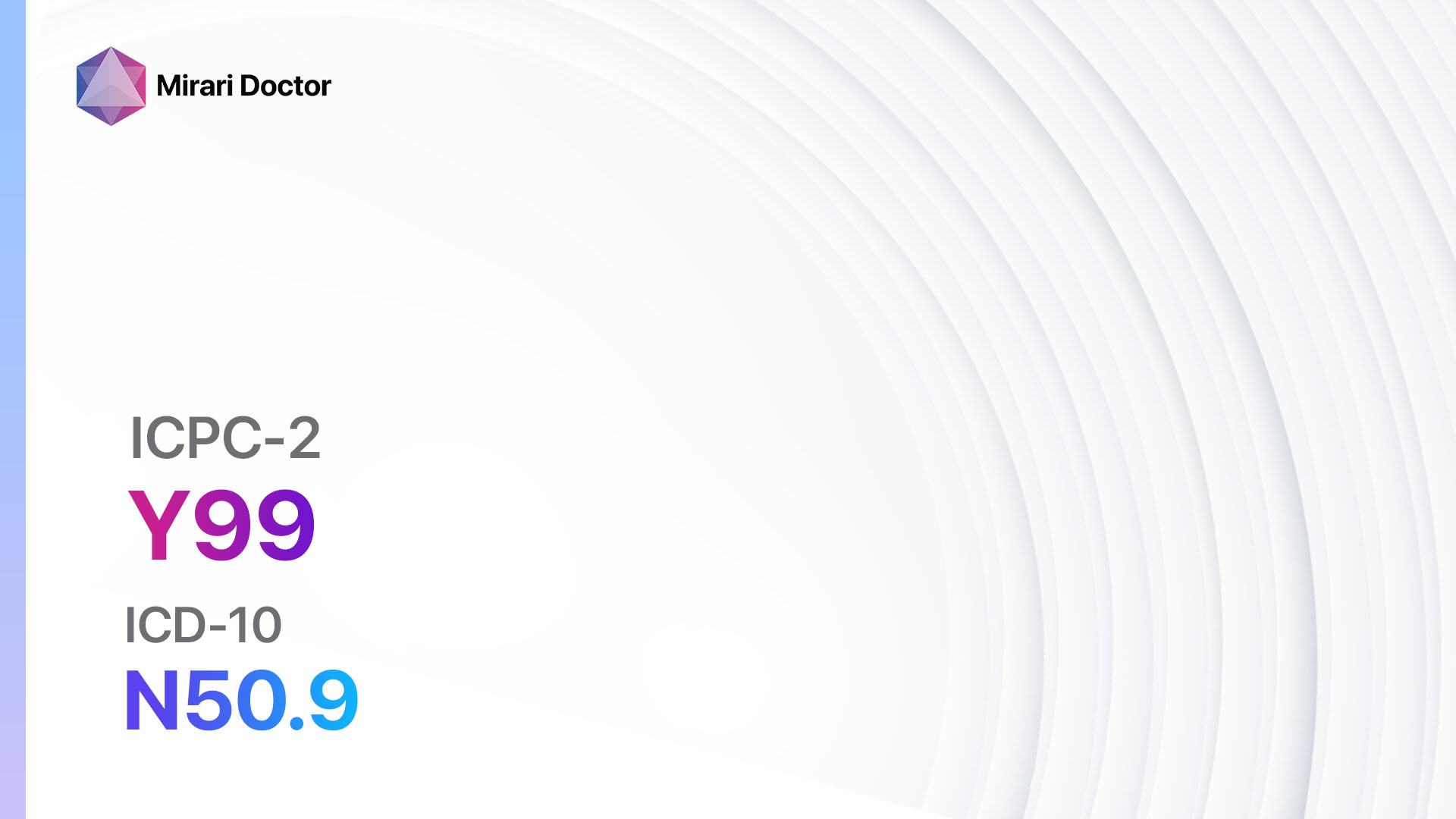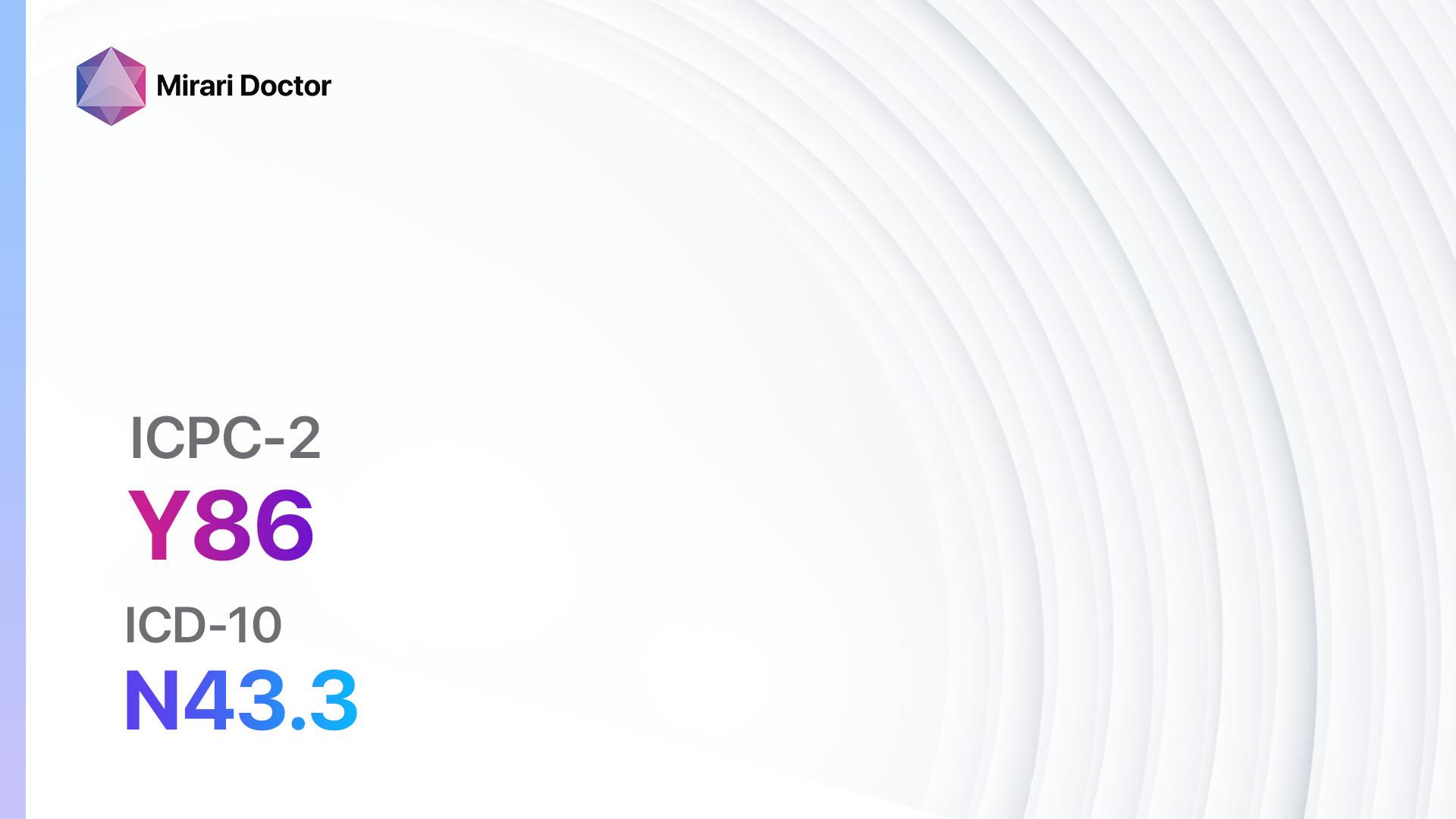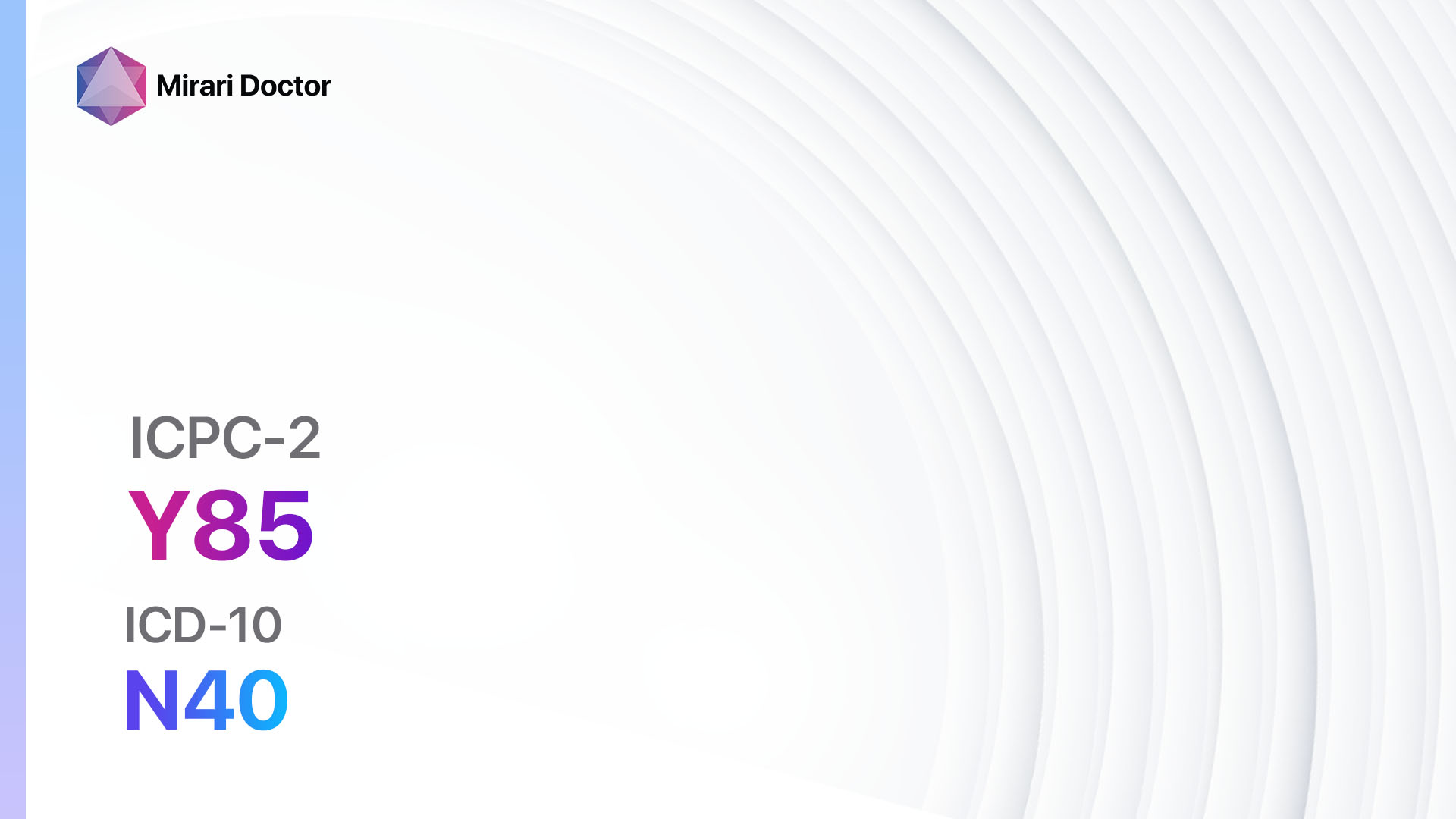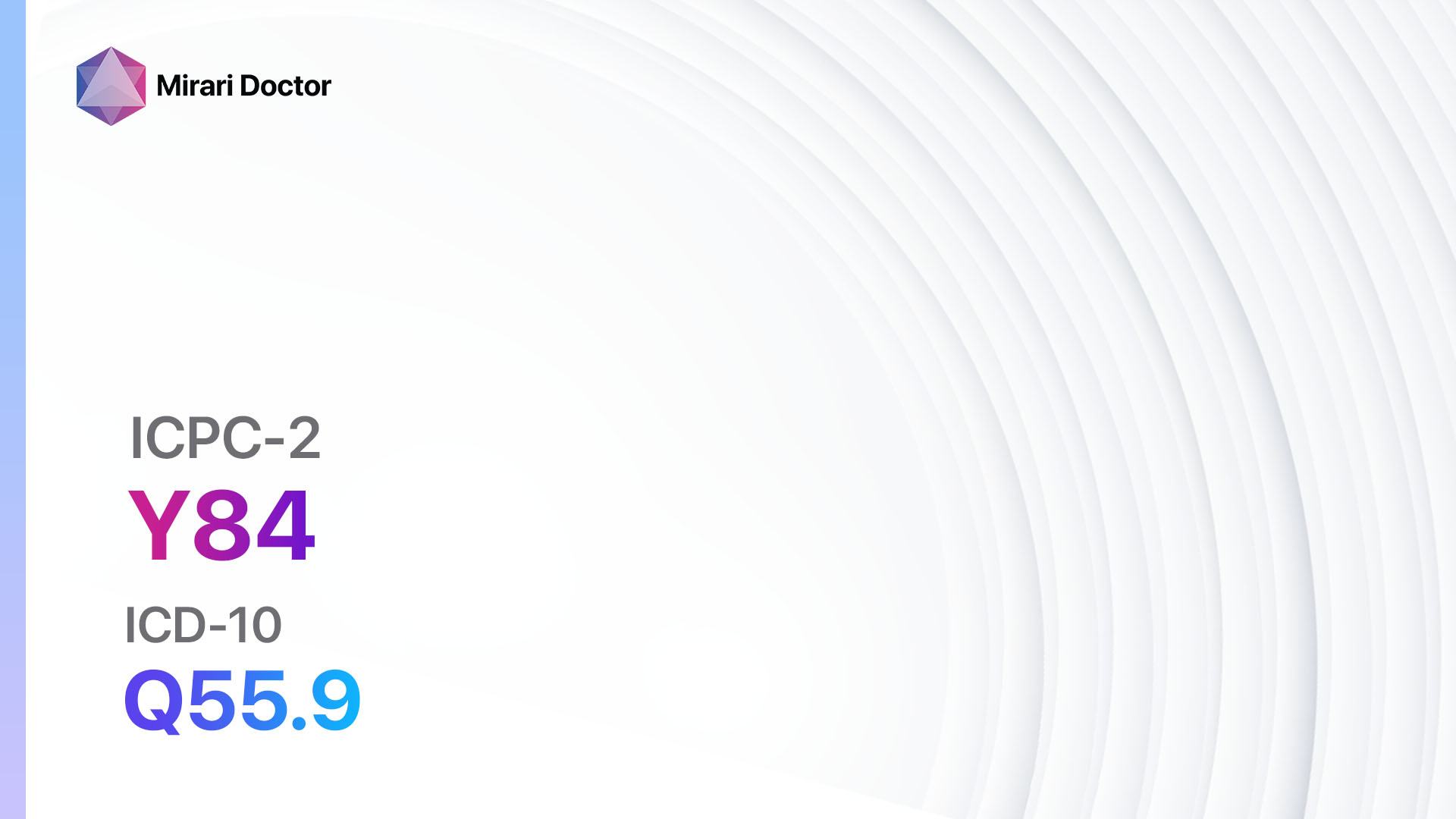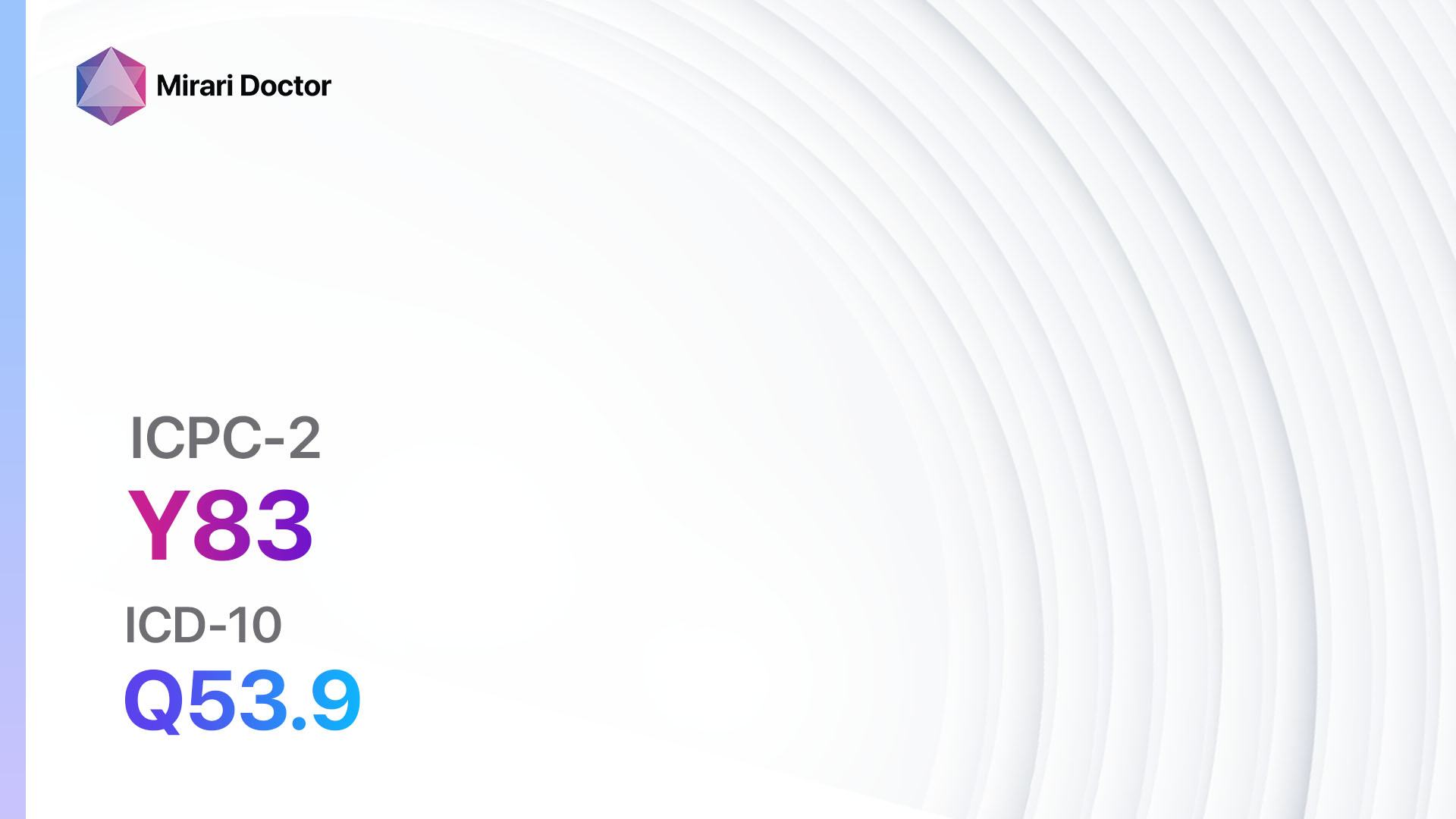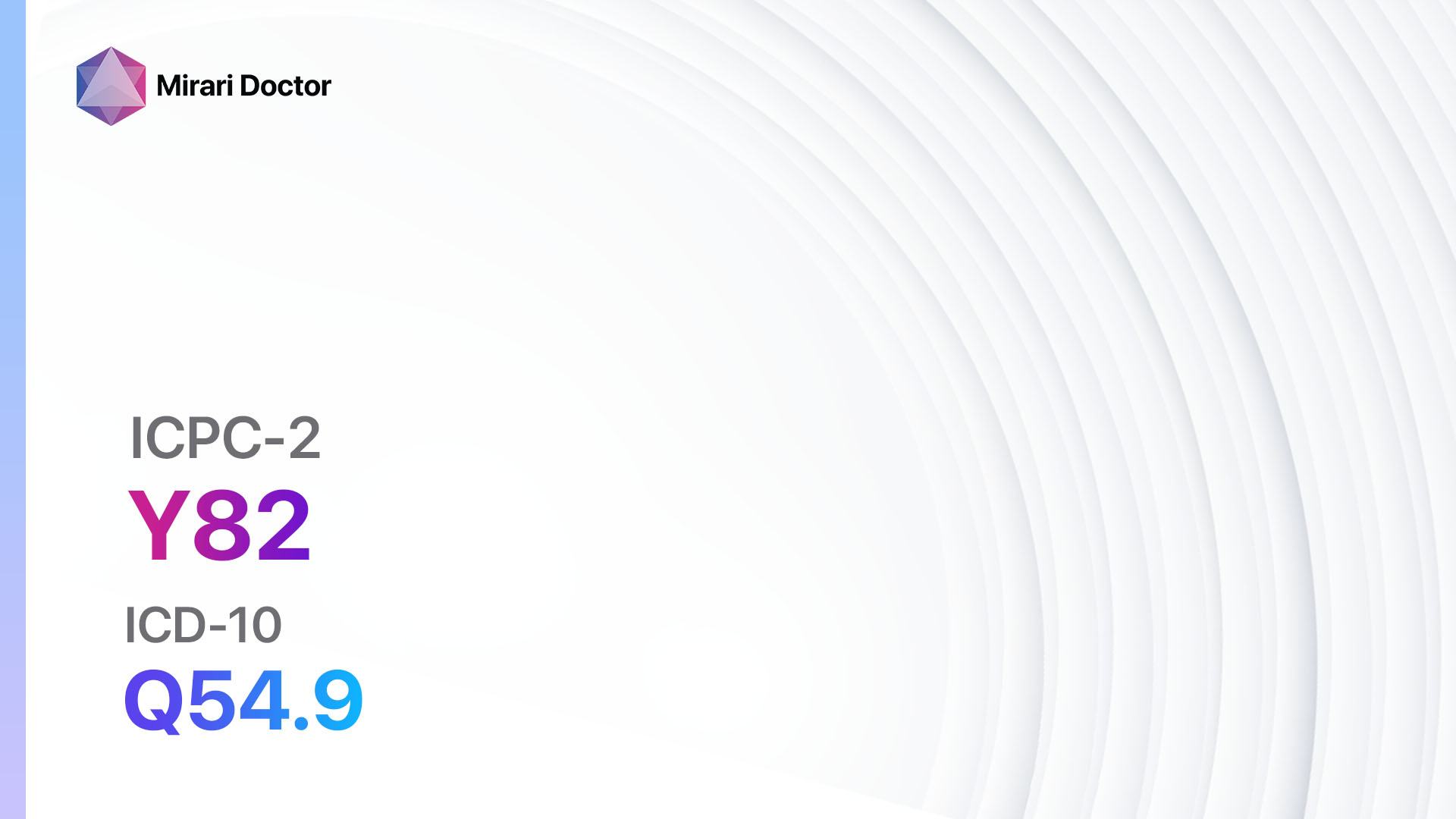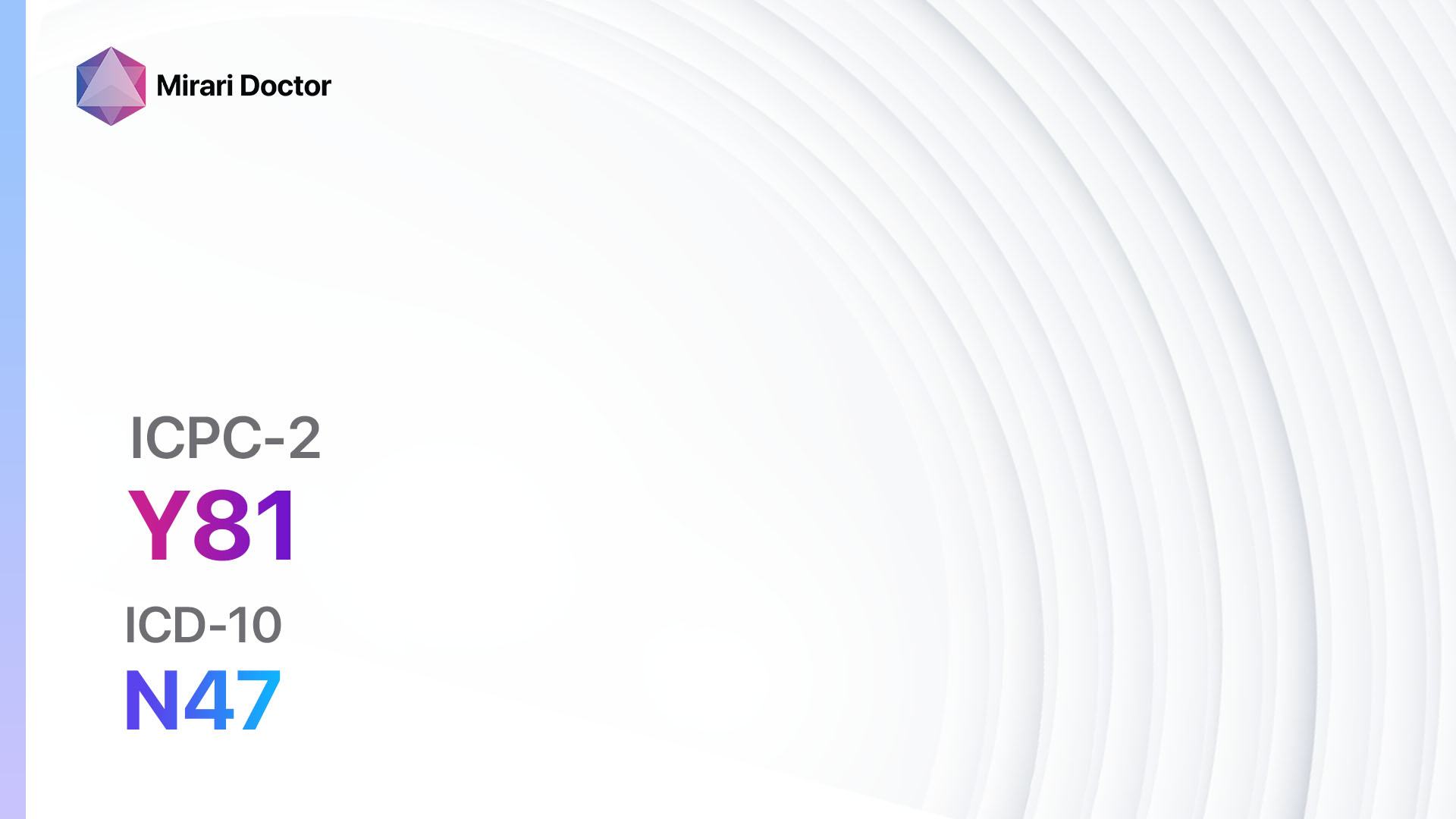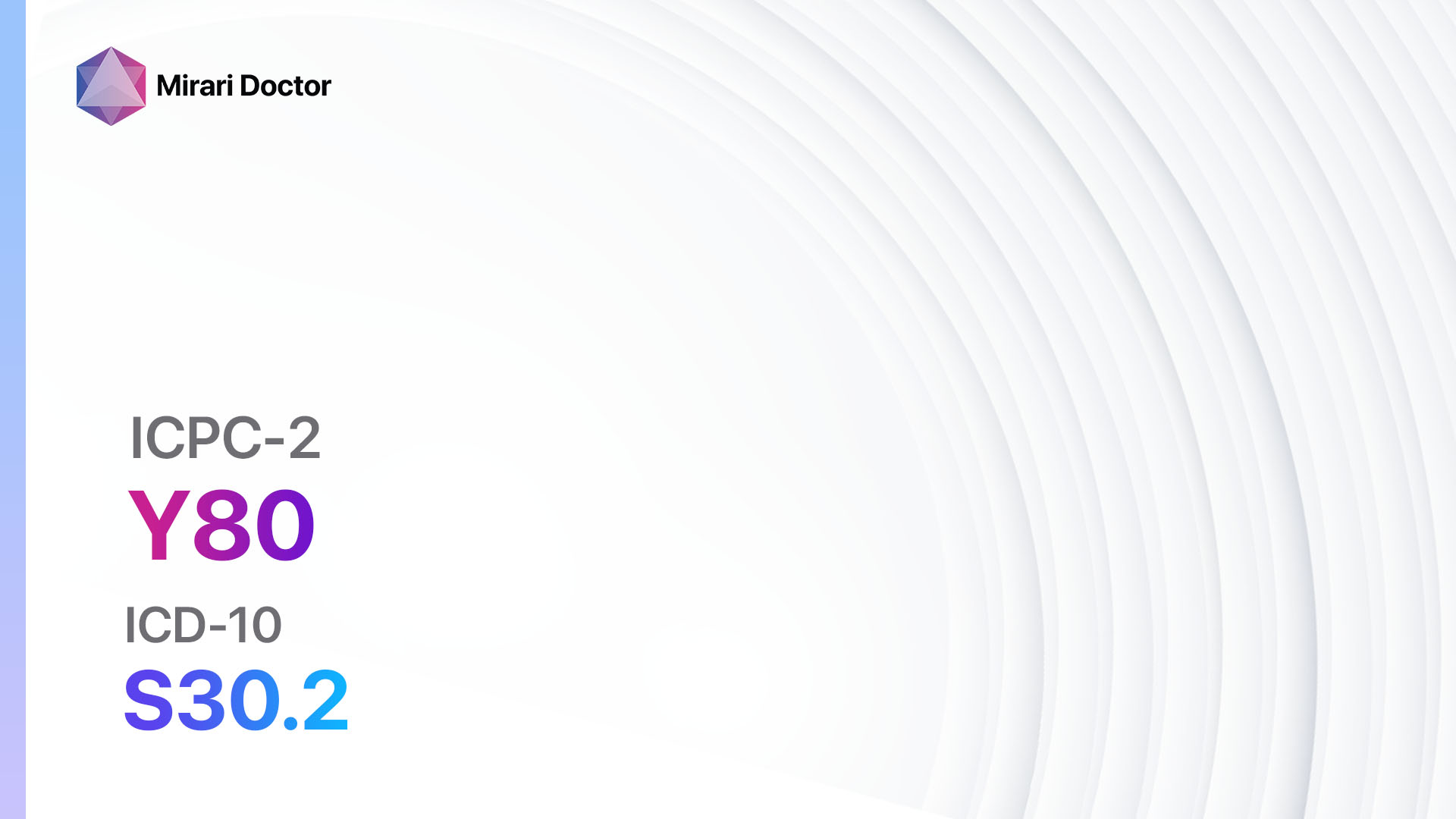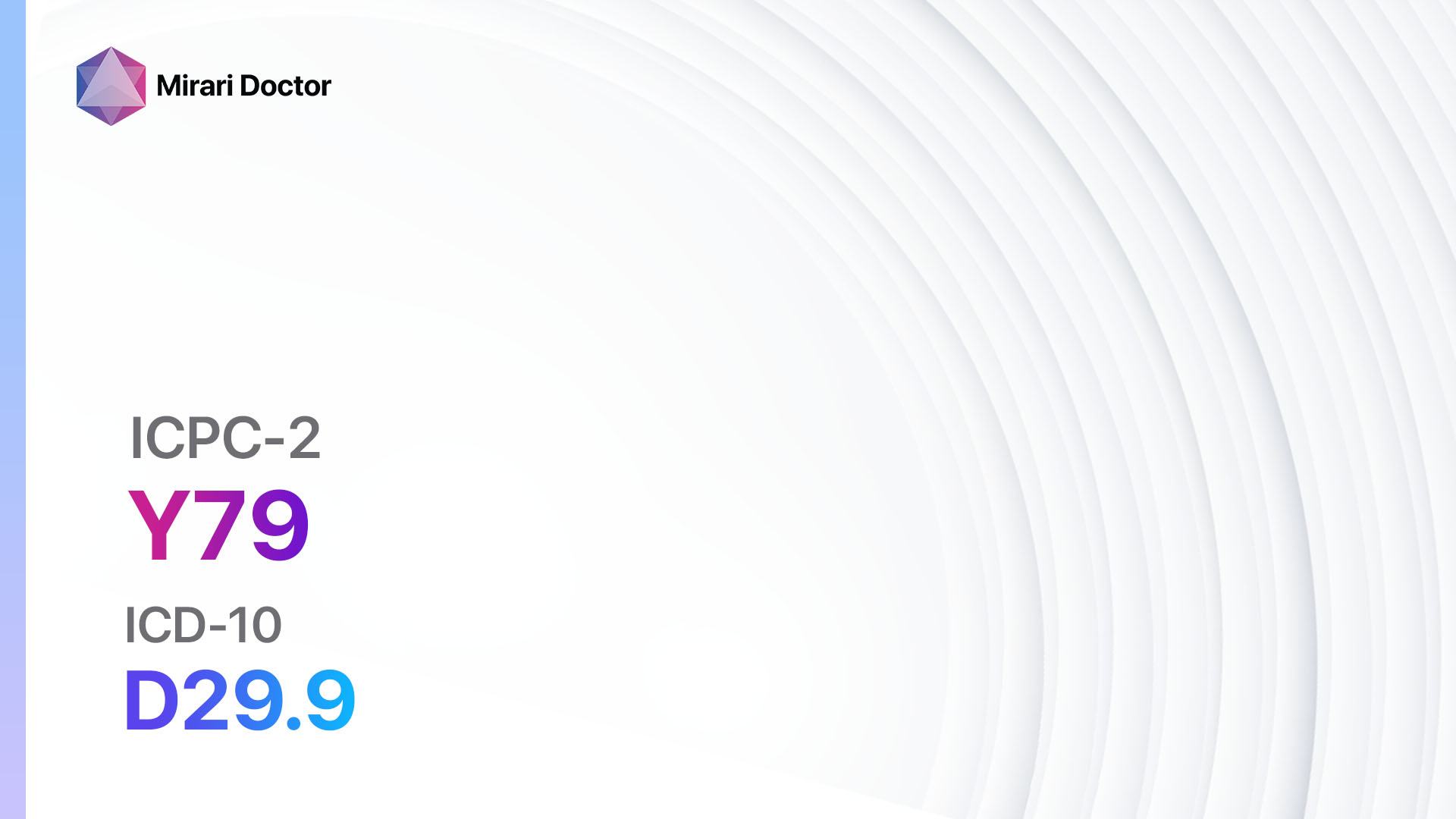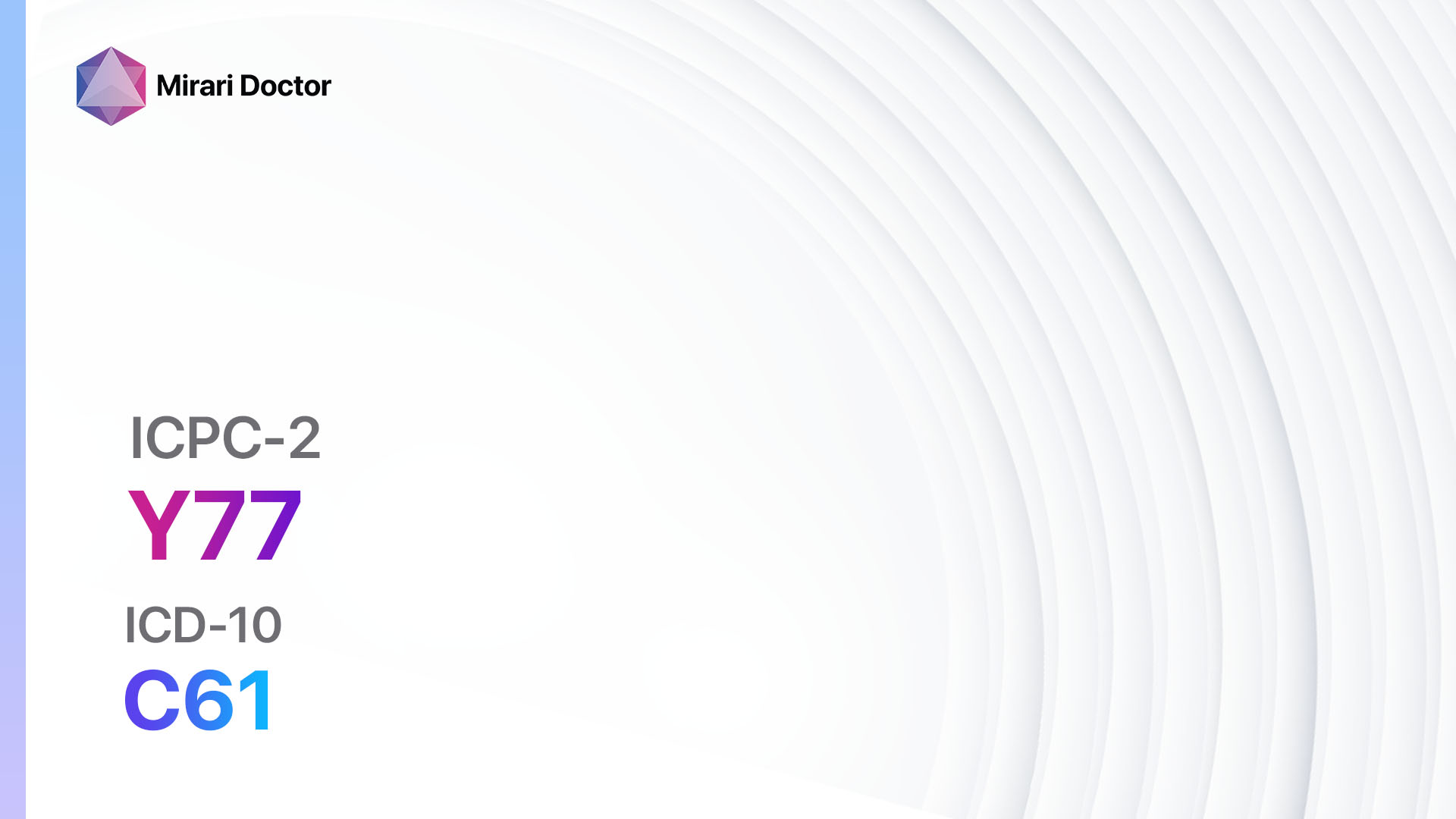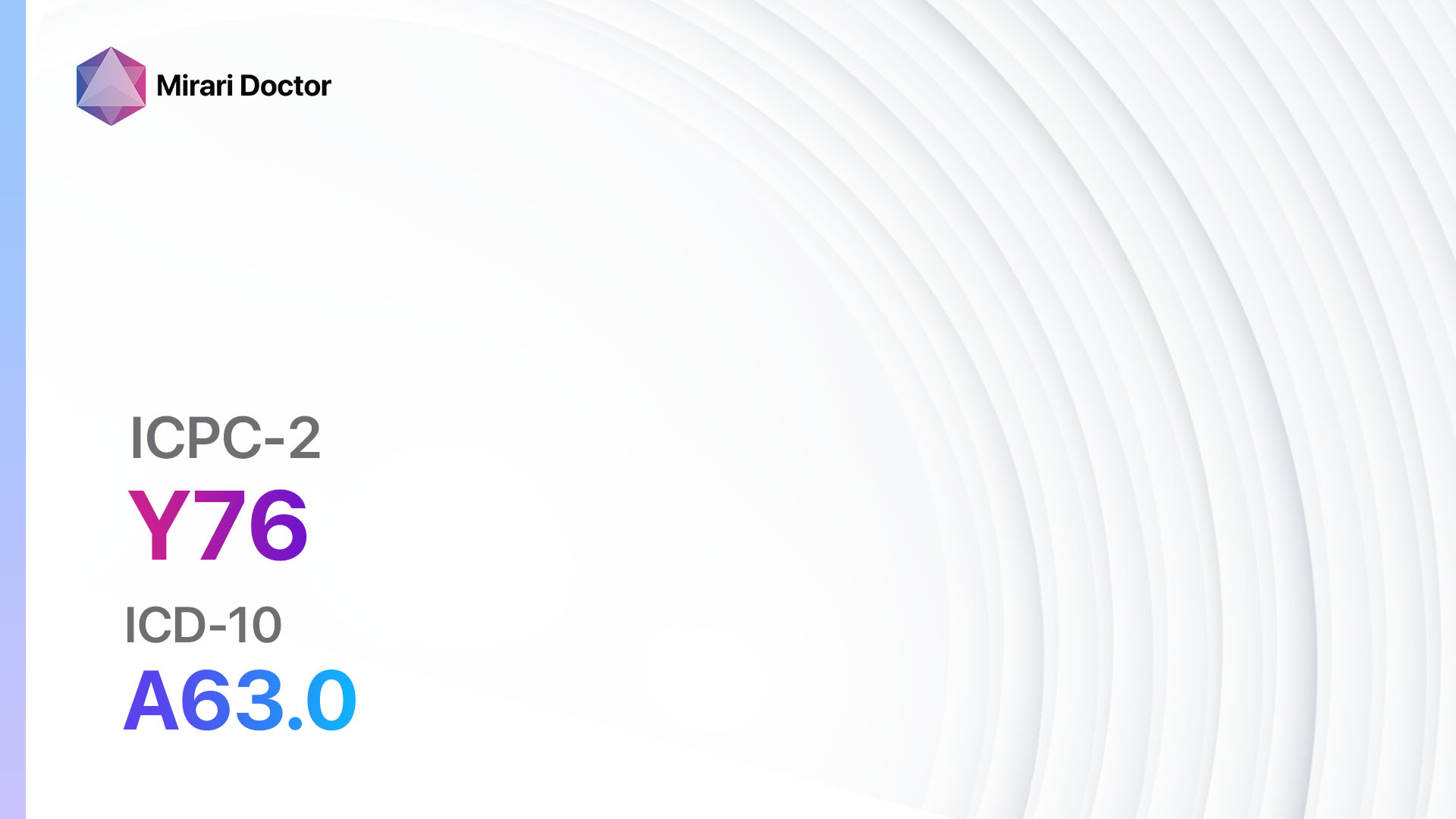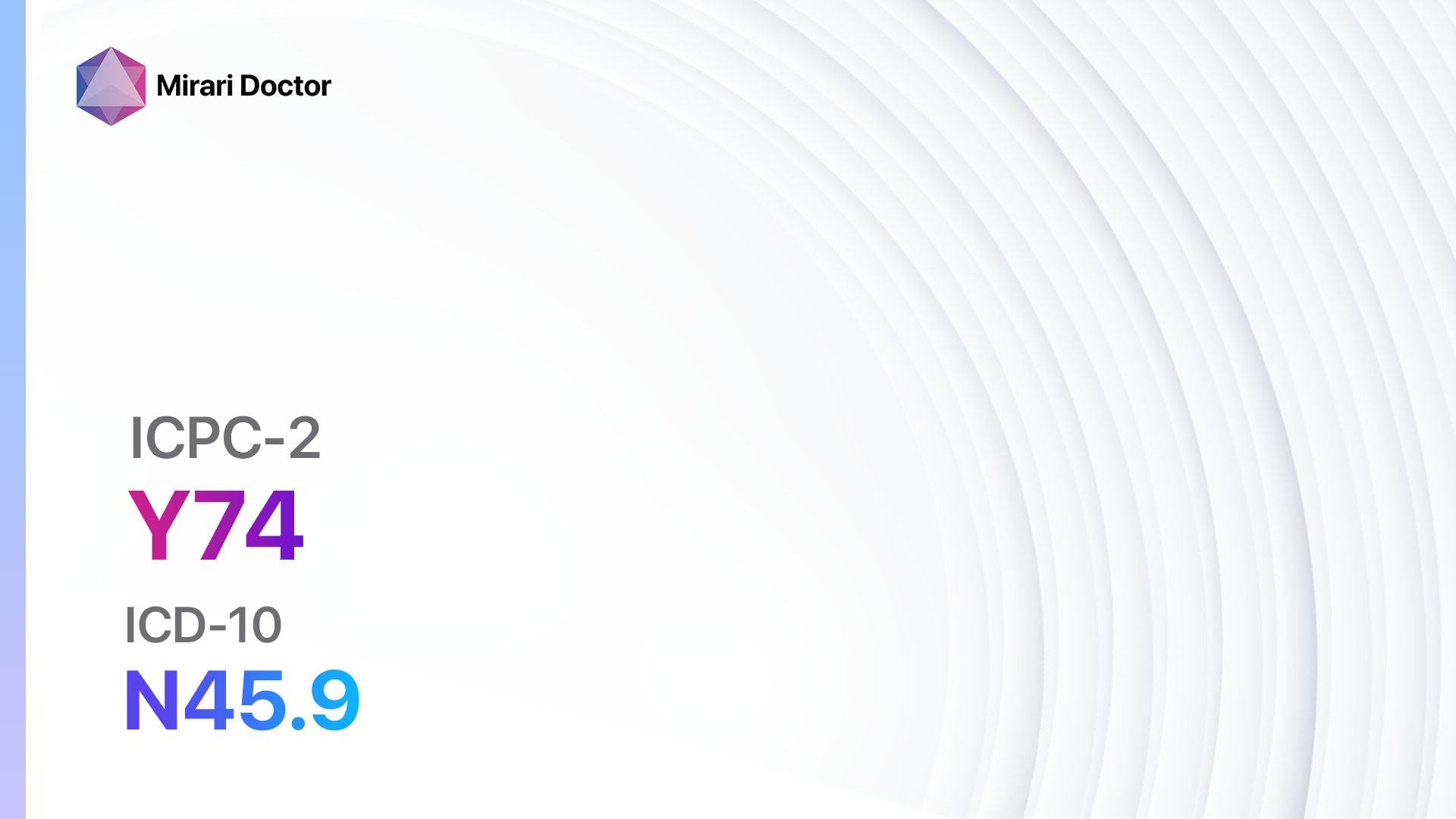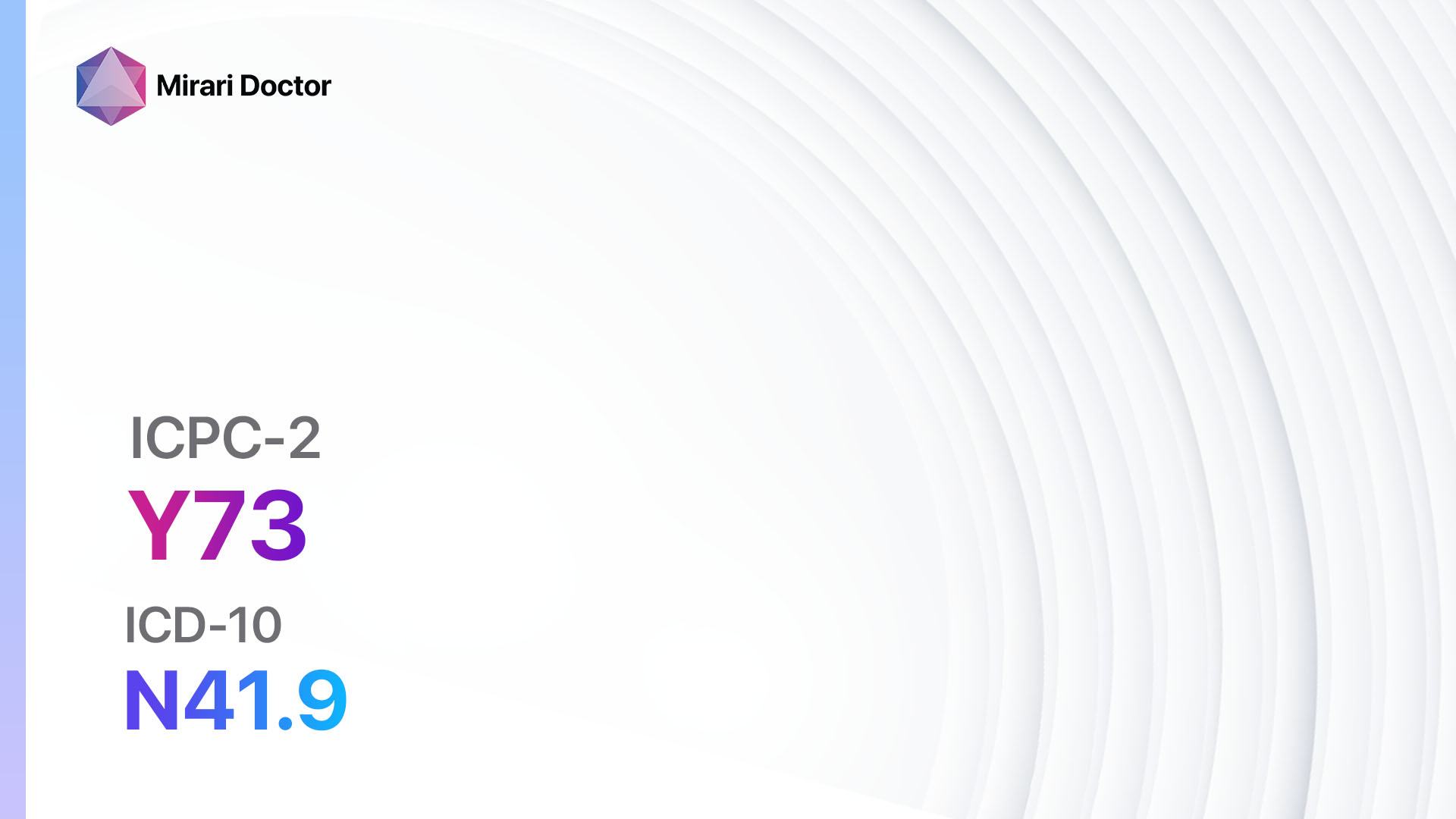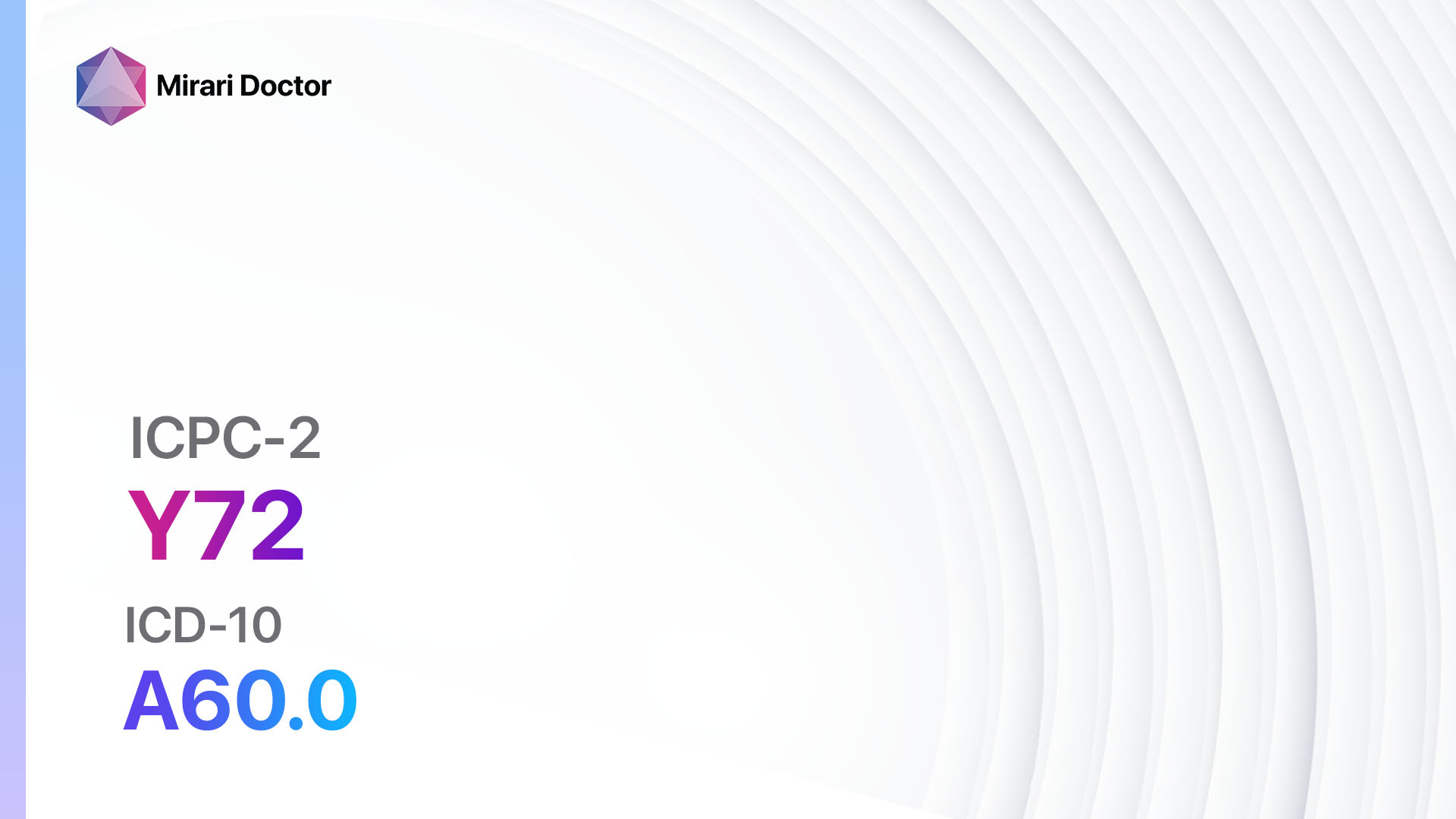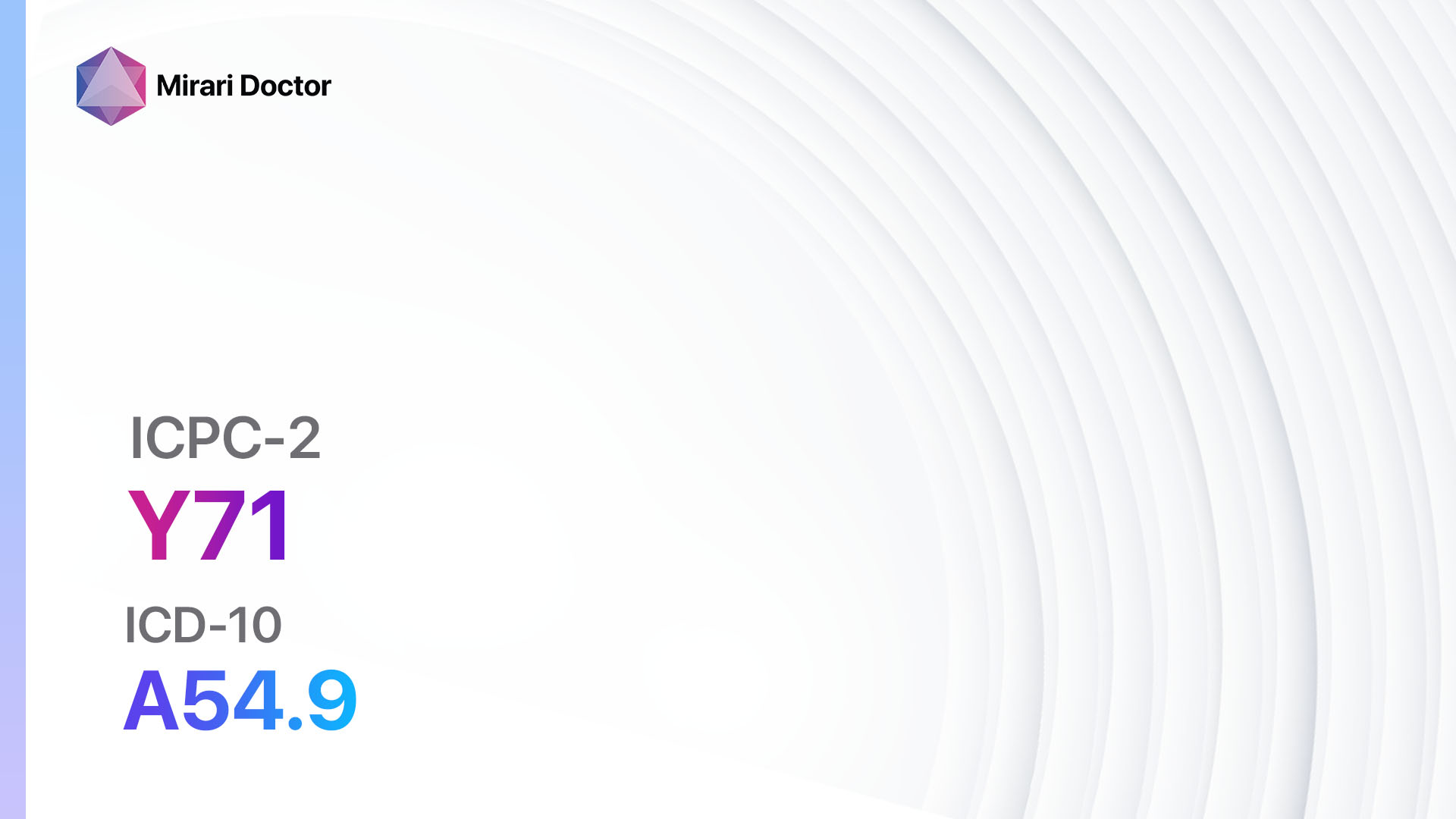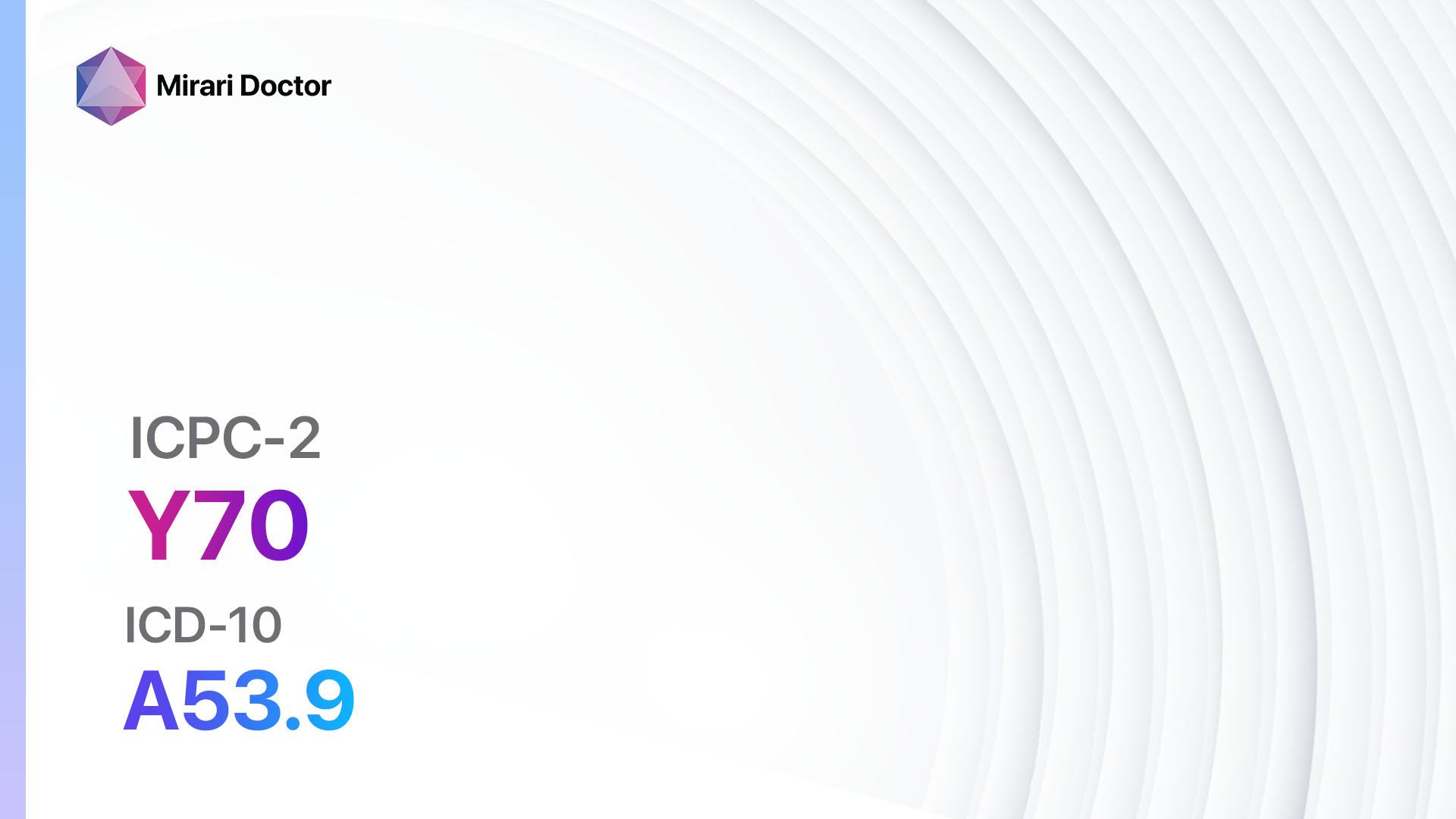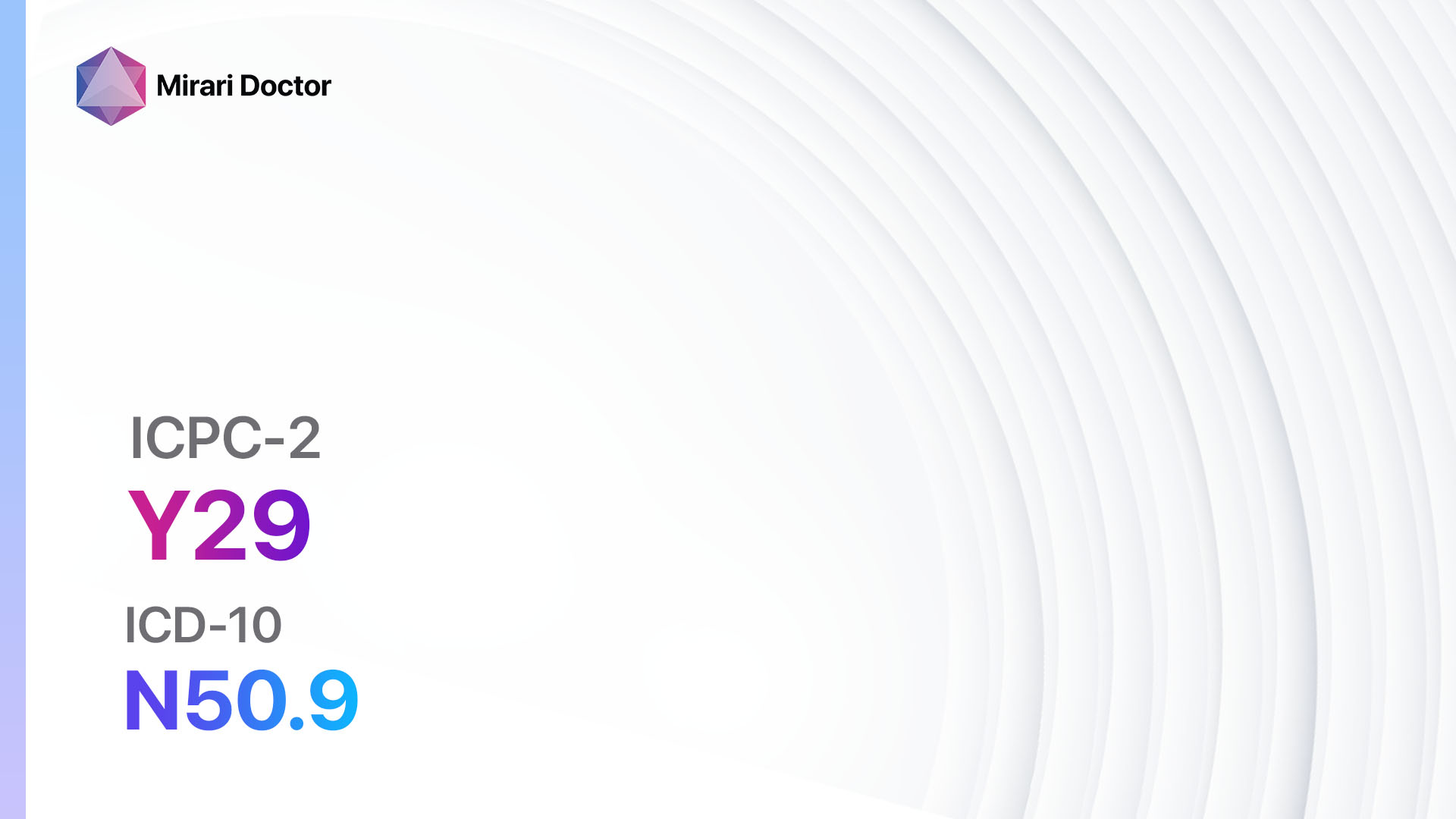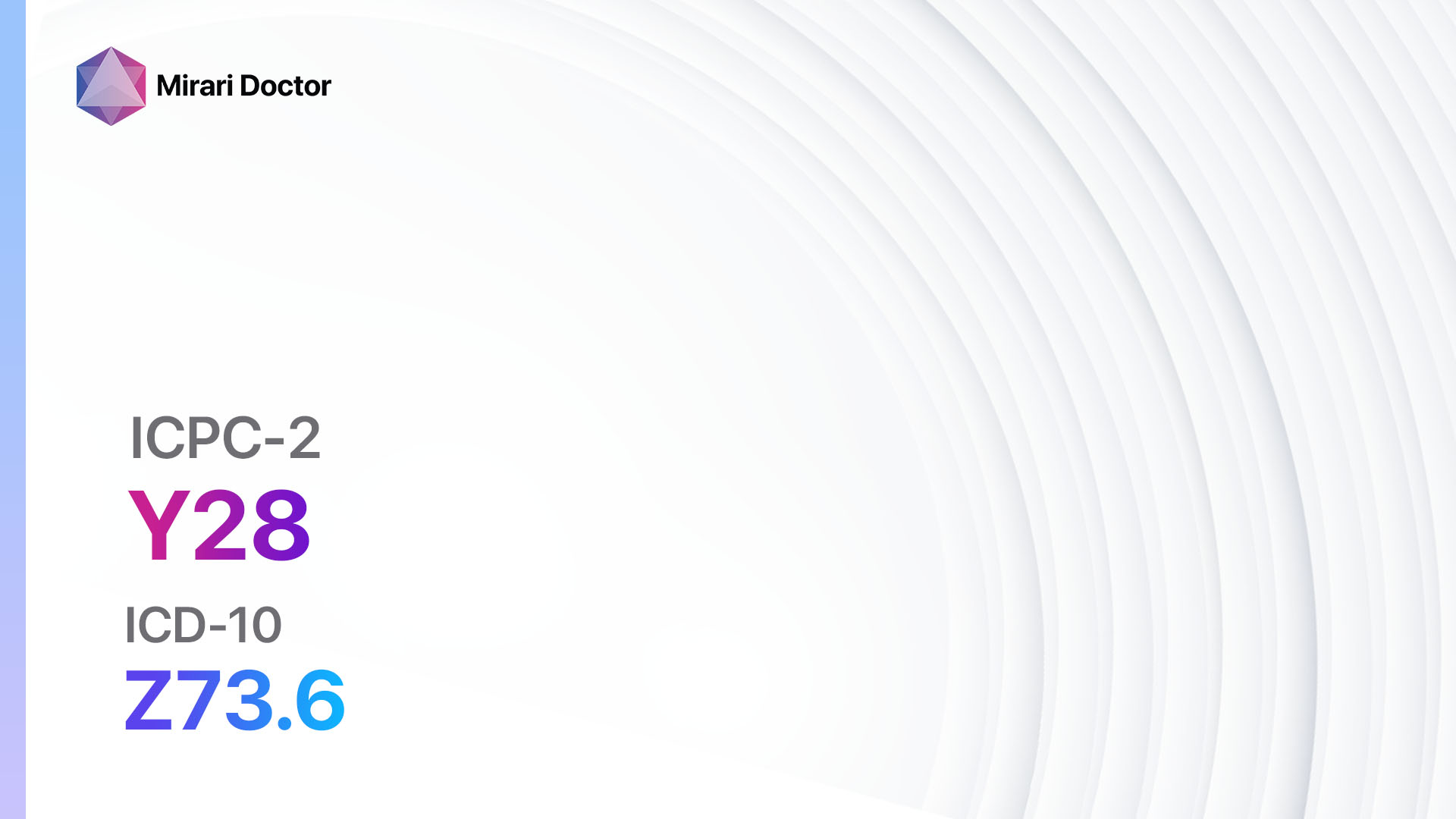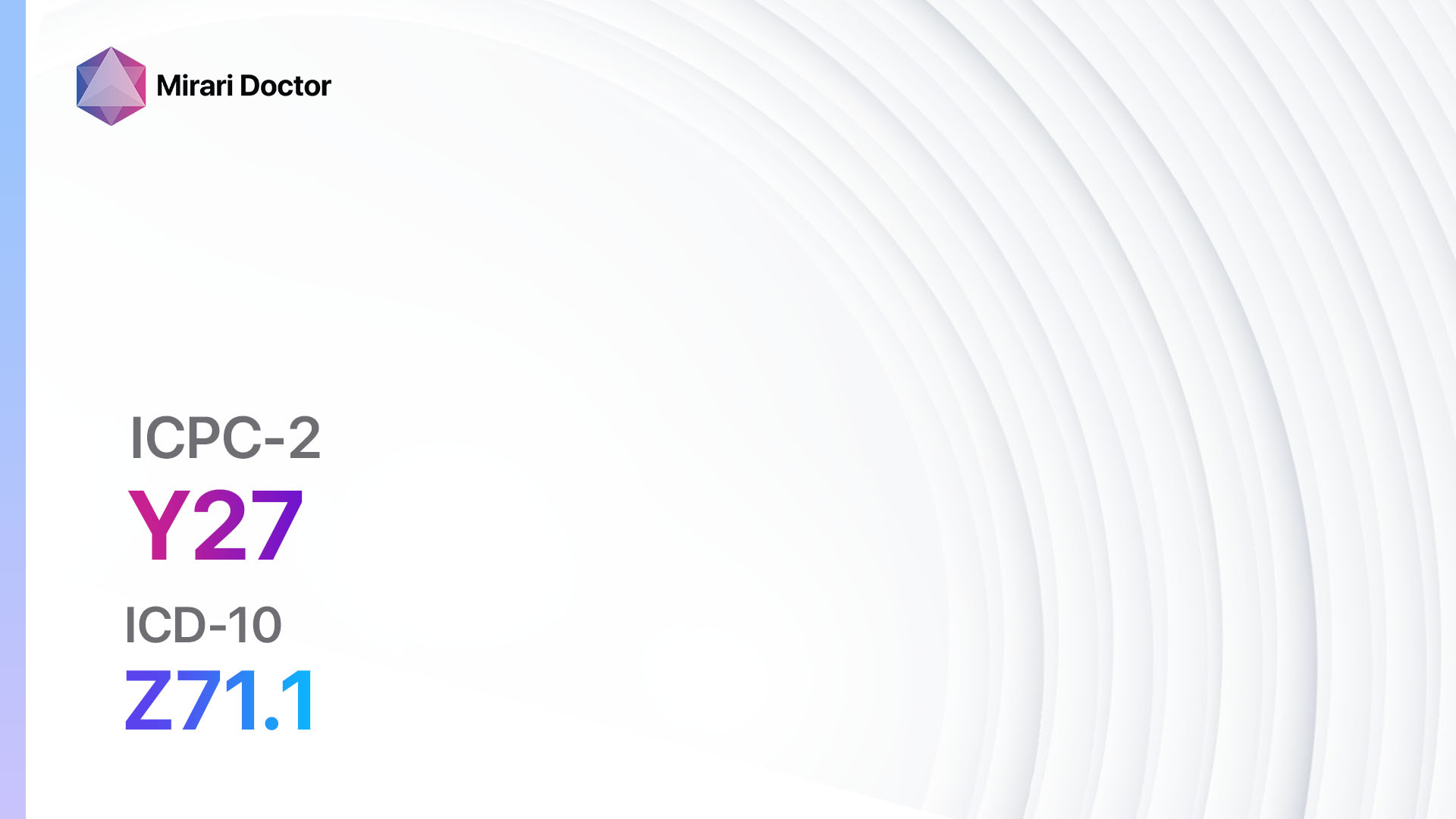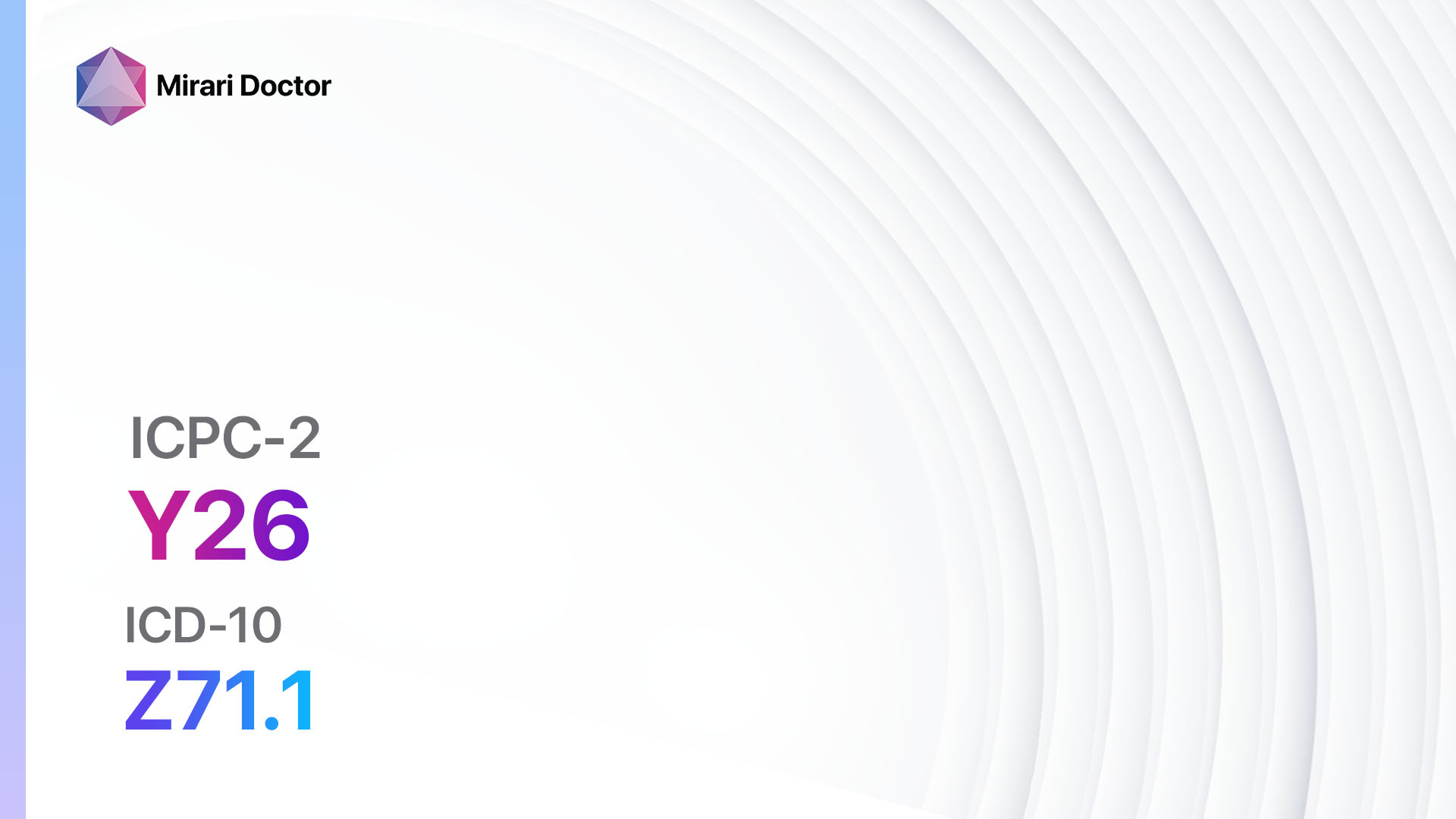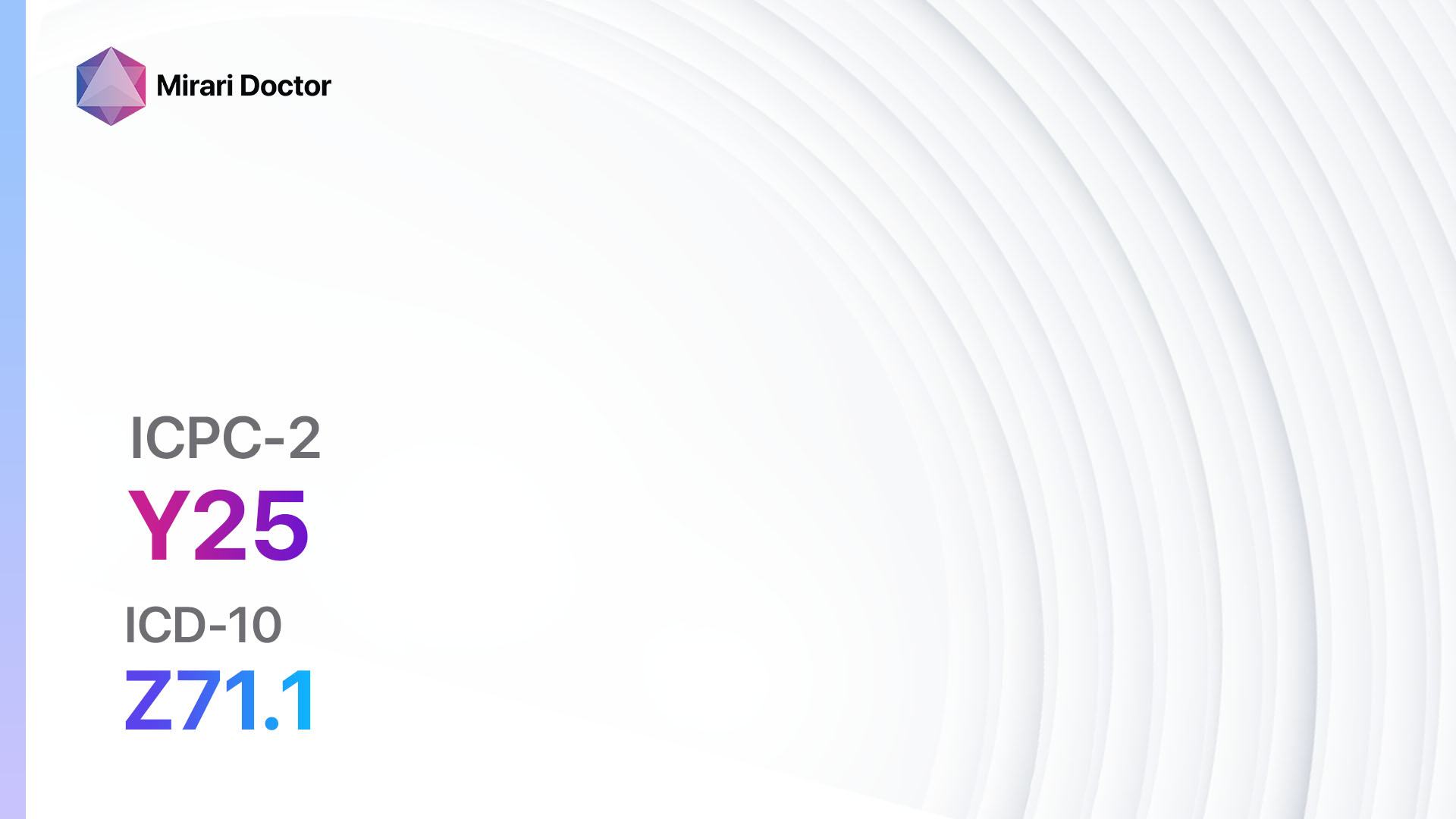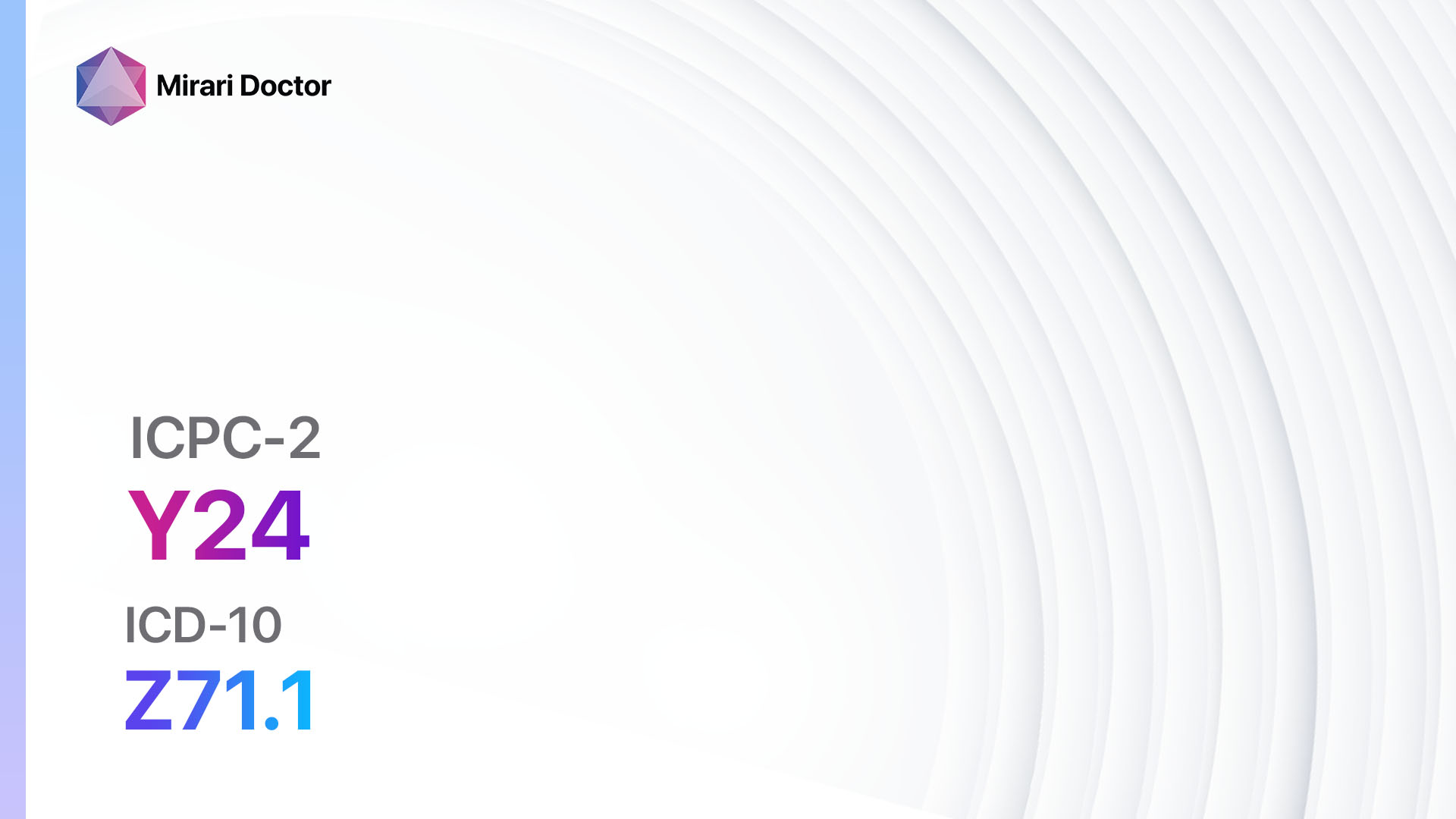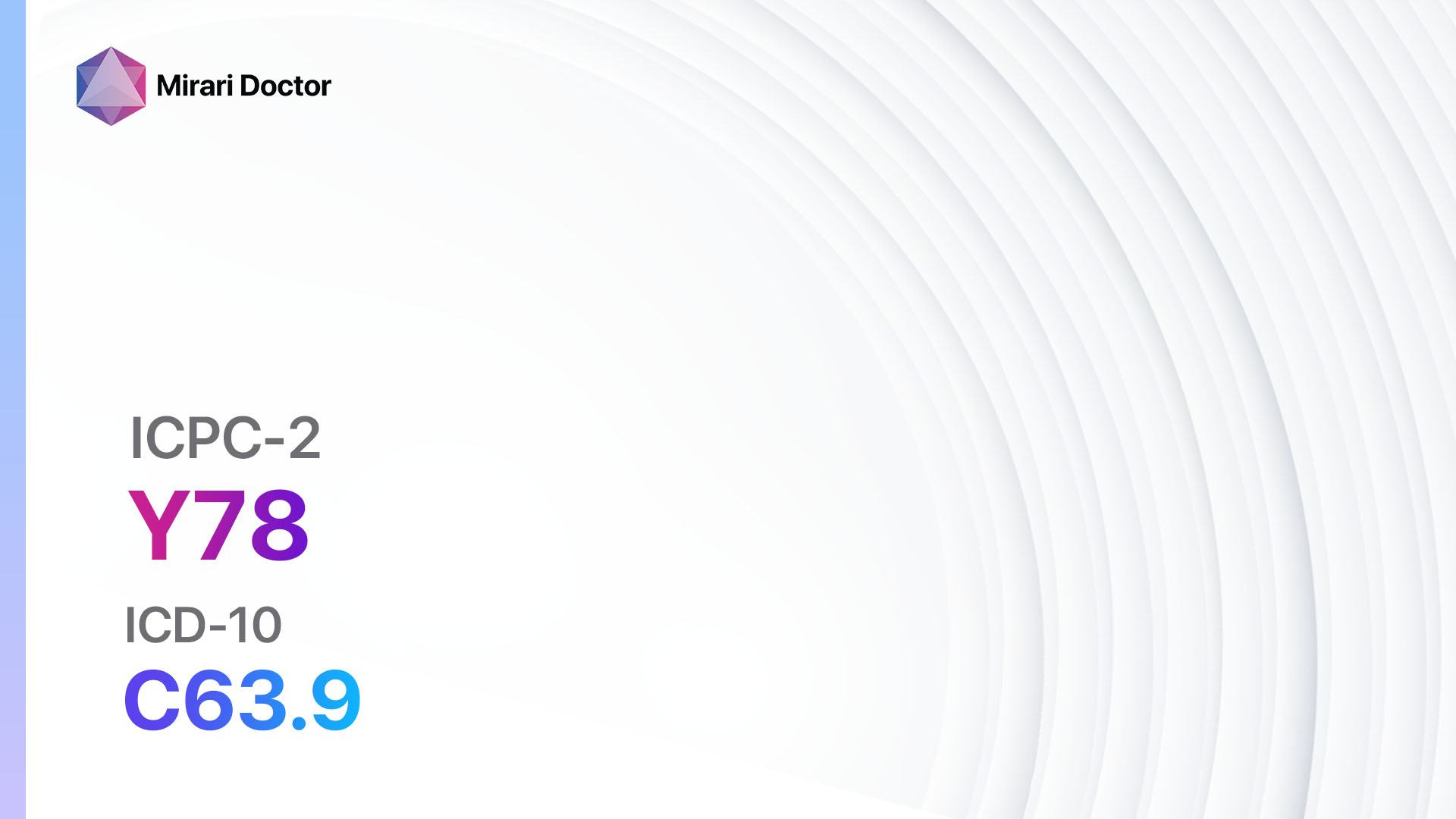
Introduction
Malign neoplasm male genital other is a condition characterized by the presence of cancerous cells in the male genital area, excluding the penis and testicles. This includes cancers of the scrotum, epididymis, and other parts of the male genitalia[1]. This condition is significant as it can lead to serious complications and requires timely diagnosis and treatment. The aim of this guide is to provide healthcare professionals with a comprehensive overview of the diagnostic steps and possible interventions for Malign neoplasm male genital other, in order to improve patient outcomes.
Codes
- ICPC-2 Code: Y78 Malignant neoplasm male genital other[2]
- ICD-10 Code: C63.9 Malignant neoplasm of male genital organ, unspecified[3]
Symptoms
- Lump or swelling in the scrotum or groin area
- Pain or discomfort in the scrotum or groin area
- Changes in the skin of the scrotum, such as redness or scaling
- Enlarged lymph nodes in the groin area
- Blood in the urine or semen
- Erectile dysfunction or other changes in sexual function[4]
Causes
- Exposure to certain chemicals or toxins, such as those found in some workplaces
- Chronic inflammation or infection in the genital area
- Family history of genital cancer
- Genetic mutations that increase the risk of cancer[5]
Diagnostic Steps
Medical History
- Obtain a detailed medical history, including information about the patient’s symptoms, risk factors, and any previous diagnoses of cancer.
- Ask about the patient’s occupation and exposure to chemicals or toxins that may increase the risk of genital cancer.
- Inquire about any family history of cancer, particularly genital cancer[6].
Physical Examination
- Perform a thorough physical examination of the scrotum, groin area, and other parts of the male genitalia.
- Look for any lumps, swelling, or changes in the skin.
- Palpate the lymph nodes in the groin area for any enlargement or tenderness[7].
Laboratory Tests
- Blood tests:
- Complete blood count (CBC) to assess for any abnormalities, such as anemia or infection.
- Tumor markers, such as alpha-fetoprotein (AFP) and beta-human chorionic gonadotropin (β-hCG), may be elevated in certain types of genital cancer.
- Urine tests:
- Urinalysis to check for the presence of blood or other abnormalities.
- Biopsy:
- A tissue sample may be taken from the affected area for further analysis to confirm the diagnosis of malign neoplasm male genital other[8].
Diagnostic Imaging
- Ultrasound:
- Used to visualize the scrotum and other parts of the male genitalia to assess for any abnormalities, such as tumors or cysts.
- CT scan or MRI:
- These imaging modalities may be used to obtain more detailed images of the affected area and to determine the extent of the cancer.
- Chest X-ray:
- To check for any signs of metastasis to the lungs[9].
Other Tests
- Lymph node biopsy:
- If enlarged lymph nodes are found in the groin area, a biopsy may be performed to determine if the cancer has spread.
- Genetic testing:
- In some cases, genetic testing may be done to identify specific genetic mutations that increase the risk of genital cancer[10].
Follow-up and Patient Education
- Schedule regular follow-up appointments to monitor the patient’s condition and response to treatment.
- Provide the patient with information about the importance of self-examination and early detection of any changes in the genital area.
- Educate the patient about the potential side effects of treatment and the importance of adhering to the prescribed regimen.
Possible Interventions
Traditional Interventions
Medications:
Top 5 drugs for Malign neoplasm male genital other:
- Chemotherapy drugs:
- Cost: Varies depending on the specific drugs used.
- Contraindications: Dependent on the specific drugs used.
- Side effects: Nausea, vomiting, hair loss, decreased blood cell counts.
- Severe side effects: Increased risk of infections, bleeding, organ damage.
- Drug interactions: Dependent on the specific drugs used.
- Warning: Close monitoring of blood cell counts and organ function required.
- Radiation therapy:
- Cost: Varies depending on the treatment duration and facility.
- Contraindications: Dependent on the specific patient characteristics and tumor location.
- Side effects: Fatigue, skin changes, hair loss, erectile dysfunction.
- Severe side effects: Damage to surrounding tissues and organs.
- Drug interactions: None.
- Warning: Close monitoring of treatment response and potential long-term side effects required.
- Surgery:
- Cost: Varies depending on the specific procedure and facility.
- Contraindications: Dependent on the specific patient characteristics, tumor size, and location.
- Side effects: Pain, bleeding, infection, scarring.
- Severe side effects: Damage to surrounding tissues and organs, erectile dysfunction.
- Drug interactions: Dependent on the specific anesthesia and post-operative medications used.
- Warning: Close monitoring of wound healing and potential complications required.
- Hormone therapy:
- Cost: Varies depending on the specific drugs used.
- Contraindications: Dependent on the specific patient characteristics and tumor type.
- Side effects: Hot flashes, decreased libido, erectile dysfunction.
- Severe side effects: Increased risk of blood clots, cardiovascular complications.
- Drug interactions: Dependent on the specific drugs used.
- Warning: Close monitoring of treatment response and potential side effects required.
- Targeted therapy:
- Cost: Varies depending on the specific drugs used.
- Contraindications: Dependent on the specific patient characteristics and tumor type.
- Side effects: Nausea, diarrhea, skin rash.
- Severe side effects: Increased risk of infections, bleeding, liver toxicity.
- Drug interactions: Dependent on the specific drugs used.
- Warning: Close monitoring of treatment response and potential side effects required.
Alternative Drugs:
- Immunotherapy: Stimulates the patient’s immune system to target and destroy cancer cells. Cost: Varies depending on the specific drugs used.
- Palliative care medications: Used to manage symptoms and improve quality of life. Cost: Varies depending on the specific drugs used.
- Pain management medications: Used to relieve pain associated with cancer. Cost: Varies depending on the specific drugs used.
Surgical Procedures:
- Radical inguinal orchiectomy: Surgical removal of the affected testicle. Cost: Varies depending on the facility and geographical location.
- Lymph node dissection: Surgical removal of the affected lymph nodes in the groin area. Cost: Varies depending on the facility and geographical location.
- Reconstructive surgery: May be performed to restore the appearance and function of the genital area after cancer treatment. Cost: Varies depending on the specific procedure and facility.
Alternative Interventions
- Acupuncture: May help manage pain and improve overall well-being. Cost: $60-$120 per session.
- Herbal supplements: Some herbs, such as turmeric and green tea, may have potential anti-cancer properties. Cost: Varies depending on the specific supplement.
- Mind-body techniques: Practices such as meditation and yoga may help reduce stress and improve quality of life. Cost: Varies depending on the specific program or class.
- Nutritional therapy: Working with a registered dietitian to develop a healthy eating plan may support overall health and well-being. Cost: Varies depending on the specific services and consultations.
- Supportive counseling: Talking to a mental health professional or joining a support group can provide emotional support during the treatment process. Cost: Varies depending on the specific services and consultations.
Lifestyle Interventions
- Healthy diet: Encourage the patient to consume a balanced diet rich in fruits, vegetables, whole grains, and lean proteins. Cost: Varies depending on the patient’s food choices and preferences.
- Regular exercise: Recommend engaging in regular physical activity, such as walking, swimming, or cycling, to support overall health and well-being. Cost: Varies depending on the specific activities and facilities.
- Stress management techniques: Encourage the patient to practice stress-reducing activities, such as deep breathing exercises or mindfulness meditation. Cost: Varies depending on the specific techniques or classes.
- Smoking cessation: Advise the patient to quit smoking to reduce the risk of cancer recurrence and improve overall health. Cost: Varies depending on the specific smoking cessation aids or programs.
- Limit alcohol consumption: Educate the patient about the potential risks of excessive alcohol consumption and encourage moderation. Cost: Varies depending on the patient’s alcohol choices and preferences.
It is important to note that the cost ranges provided are approximate and may vary depending on the location and availability of the interventions. Healthcare professionals should consult with the patient’s healthcare team and consider individual patient factors when determining the most appropriate interventions for Malign neoplasm male genital other.
Mirari Cold Plasma Alternative Intervention
Understanding Mirari Cold Plasma
- Safe and Non-Invasive Treatment: Mirari Cold Plasma is a safe and non-invasive treatment option for various skin conditions. It does not require incisions, minimizing the risk of scarring, bleeding, or tissue damage.
- Efficient Extraction of Foreign Bodies: Mirari Cold Plasma facilitates the removal of foreign bodies from the skin by degrading and dissociating organic matter, allowing easier access and extraction.
- Pain Reduction and Comfort: Mirari Cold Plasma has a local analgesic effect, providing pain relief during the treatment, making it more comfortable for the patient.
- Reduced Risk of Infection: Mirari Cold Plasma has antimicrobial properties, effectively killing bacteria and reducing the risk of infection.
- Accelerated Healing and Minimal Scarring: Mirari Cold Plasma stimulates wound healing and tissue regeneration, reducing healing time and minimizing the formation of scars.
Mirari Cold Plasma Prescription
Video instructions for using Mirari Cold Plasma Device – Y78 Malignant neoplasm male genital other (ICD-10:C63.9)
| Mild | Moderate | Severe |
| Mode setting: 2 (Wound Healing) Location: 2 (Prostate & Uterus) Morning: 15 minutes, Evening: 15 minutes |
Mode setting: 2 (Wound Healing) Location: 2 (Prostate & Uterus) Morning: 30 minutes, Lunch: 30 minutes, Evening: 30 minutes |
Mode setting: 2 (Wound Healing) Location: 2 (Prostate & Uterus) Morning: 30 minutes, Lunch: 30 minutes, Evening: 30 minutes |
| Mode setting: 5 (Prostatitis Therapy) Location: 2 (Prostate & Uterus) Morning: 15 minutes, Evening: 15 minutes |
Mode setting: 5 (Prostatitis Therapy) Location: 2 (Prostate & Uterus) Morning: 30 minutes, Lunch: 30 minutes, Evening: 30 minutes |
Mode setting: 5 (Prostatitis Therapy) Location: 2 (Prostate & Uterus) Morning: 30 minutes, Lunch: 30 minutes, Evening: 30 minutes |
| Mode setting: 3 (Antiviral Therapy) Location: 0 (Localized) Morning: 15 minutes, Evening: 15 minutes |
Mode setting: 3 (Antiviral Therapy) Location: 0 (Localized) Morning: 30 minutes, Lunch: 30 minutes, Evening: 30 minutes |
Mode setting: 3 (Antiviral Therapy) Location: 0 (Localized) Morning: 30 minutes, Lunch: 30 minutes, Evening: 30 minutes |
| Mode setting: 7 (Immunotherapy) Location: 1 (Sacrum) Morning: 15 minutes, Evening: 15 minutes |
Mode setting: 7 (Immunotherapy) Location: 1 (Sacrum) Morning: 30 minutes, Lunch: 30 minutes, Evening: 30 minutes |
Mode setting: 7 (Immunotherapy) Location: 1 (Sacrum) Morning: 30 minutes, Lunch: 30 minutes, Evening: 30 minutes |
| Total Morning: 60 minutes approx. $10 USD, Evening: 60 minutes approx. $10 USD |
Total Morning: 120 minutes approx. $20 USD, Lunch: 120 minutes approx. $20 USD, Evening: 120 minutes approx. $20 USD, |
Total Morning: 120 minutes approx. $20 USD, Lunch: 120 minutes approx. $20 USD, Evening: 120 minutes approx. $20 USD, |
| Usual treatment for 7-60 days approx. $140 USD – $1200 USD | Usual treatment for 6-8 weeks approx. $2,520 USD – $3,360 USD |
Usual treatment for 3-6 months approx. $5,400 USD – $10,800 USD
|
 |
|
Use the Mirari Cold Plasma device to treat Malign neoplasm male genital other effectively.
WARNING: MIRARI COLD PLASMA IS DESIGNED FOR THE HUMAN BODY WITHOUT ANY ARTIFICIAL OR THIRD PARTY PRODUCTS. USE OF OTHER PRODUCTS IN COMBINATION WITH MIRARI COLD PLASMA MAY CAUSE UNPREDICTABLE EFFECTS, HARM OR INJURY. PLEASE CONSULT A MEDICAL PROFESSIONAL BEFORE COMBINING ANY OTHER PRODUCTS WITH USE OF MIRARI.
Step 1: Cleanse the Skin
- Start by cleaning the affected area of the skin with a gentle cleanser or mild soap and water. Gently pat the area dry with a clean towel.
Step 2: Prepare the Mirari Cold Plasma device
- Ensure that the Mirari Cold Plasma device is fully charged or has fresh batteries as per the manufacturer’s instructions. Make sure the device is clean and in good working condition.
- Switch on the Mirari device using the power button or by following the specific instructions provided with the device.
- Some Mirari devices may have adjustable settings for intensity or treatment duration. Follow the manufacturer’s instructions to select the appropriate settings based on your needs and the recommended guidelines.
Step 3: Apply the Device
- Place the Mirari device in direct contact with the affected area of the skin. Gently glide or hold the device over the skin surface, ensuring even coverage of the area experiencing.
- Slowly move the Mirari device in a circular motion or follow a specific pattern as indicated in the user manual. This helps ensure thorough treatment coverage.
Step 4: Monitor and Assess:
- Keep track of your progress and evaluate the effectiveness of the Mirari device in managing your Malign neoplasm male genital other. If you have any concerns or notice any adverse reactions, consult with your health care professional.
Note
This guide is for informational purposes only and should not replace the advice of a medical professional. Always consult with your healthcare provider or a qualified medical professional for personal advice, diagnosis, or treatment. Do not solely rely on the information presented here for decisions about your health. Use of this information is at your own risk. The authors of this guide, nor any associated entities or platforms, are not responsible for any potential adverse effects or outcomes based on the content.
Mirari Cold Plasma System Disclaimer
- Purpose: The Mirari Cold Plasma System is a Class 2 medical device designed for use by trained healthcare professionals. It is registered for use in Thailand and Vietnam. It is not intended for use outside of these locations.
- Informational Use: The content and information provided with the device are for educational and informational purposes only. They are not a substitute for professional medical advice or care.
- Variable Outcomes: While the device is approved for specific uses, individual outcomes can differ. We do not assert or guarantee specific medical outcomes.
- Consultation: Prior to utilizing the device or making decisions based on its content, it is essential to consult with a Certified Mirari Tele-Therapist and your medical healthcare provider regarding specific protocols.
- Liability: By using this device, users are acknowledging and accepting all potential risks. Neither the manufacturer nor the distributor will be held accountable for any adverse reactions, injuries, or damages stemming from its use.
- Geographical Availability: This device has received approval for designated purposes by the Thai and Vietnam FDA. As of now, outside of Thailand and Vietnam, the Mirari Cold Plasma System is not available for purchase or use.
References
- Siegel RL, Miller KD, Jemal A. Cancer statistics, 2020. CA Cancer J Clin. 2020;70(1):7-30.
- World Health Organization. International Classification of Primary Care, Second edition (ICPC-2). Geneva: WHO; 2003.
- World Health Organization. International Statistical Classification of Diseases and Related Health Problems, 10th Revision (ICD-10). Geneva: WHO; 2019.
- National Cancer Institute. Male Genital Cancers—Patient Version. Bethesda, MD: NCI; 2021.
- American Cancer Society. Risk Factors for Penile Cancer. Atlanta, GA: ACS; 2021.
- Mottet N, et al. EAU-EANM-ESTRO-ESUR-SIOG Guidelines on Prostate Cancer. Eur Urol. 2020;79(2):243-262.
- Wein AJ, et al. Campbell-Walsh Urology. 12th ed. Philadelphia, PA: Elsevier; 2020.
- Patel H, et al. Systematic review of the incidence and prevalence of genital warts. BMC Infect Dis. 2013;13:39.
- Futterer JJ, et al. Can Clinically Significant Prostate Cancer Be Detected with Multiparametric Magnetic Resonance Imaging? A Systematic Review of the Literature. Eur Urol. 2015;68(6):1045-1053.
- Pritchard CC, et al. Inherited DNA-Repair Gene Mutations in Men with Metastatic Prostate Cancer. N Engl J Med. 2016;375(5):443-453.
Related articles
Made in USA


